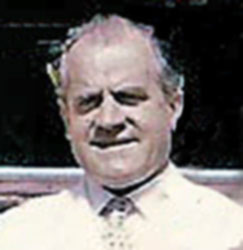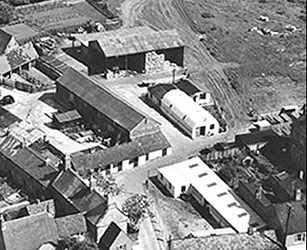| John Meads 2015 | |||
|
|||
|
|||
| In November 1953 under the headline "MINK BREEDING BEGINS IN NORTHANTS" the Northampton Mercury & Herald reported on a potential new industry in Burton Latimer: "NOT EASY, BUT FASCINATING" - Mink farming on a large scale is non-existent in Northamptonshire at present, but if a Burton Latimer man suceeds in his ambition hundreds of pelts will be leaving this area in about four years time to be sold for the making of fur coats. In a small hut on the Burton Latimer farm of W.D. Evans Ltd., 22 of these furry little animals are being kept. And from breeding with them plans are in operation to build up the first first big mink farm in the county. The owner of the mink, Mr. Sidney Talbott, of 8, Eady-road, who is manager at the farm, told a "Mercry and Herald" reporter that with luck during breeding seasons he should be able to start large-scale killing for furs in about four years time. It was about 18 months ago that he bought 17 mink from a farmer who was selling out. Now the number has increased to 22, for his first attempt at breeding with a pair proved very successful. They are worth about £20 each as breeders and a pelt can be sold for anything between £8-£17. FIVE IN A LITTER In spring Mr. Talbott will mate 12 female mink and hopes he will get 50 or more kittens. Usually there are about five kittens in a litter. The kitten when born is about two inches long. But in a matter of four months it is fully grown. Mr. Talbott's smallholding contains two varieties of mink - blue standard, which are the bread and butter animals of the mink trade and the silver dark. They are housed in pens above ground and their runs are floored with medium gauge wire-netting which the animals prefer to a solid base. On an average Mr. Talbott spends about three-quarters of an hour a day on the animals, mainly in preparing their food, which consists of fish offal and liver. Commenting on his "hobby" which he hopes will one day become a profitable vocation, Mr. Talbott said: "Mink- breeding is not easy - but it is fascinating." 100 SKINS TO A COAT Saying that it took 100 skins to make an average coat, he remarked: "My wife has got high hopes of getting one and I hope that the day will come when I can present her with it." A carnivorous quadruped, the mink is a member of the weasel tribe. Cousin to the sable and otter, it is mainly found in Europe, Central Asia and North America.
Alas, no more has been found about this project and it is suspected that Mrs. Talbott never got her home-grown mink coat. |
|||

